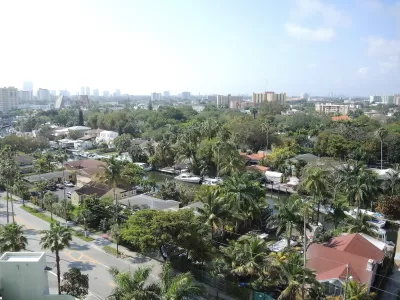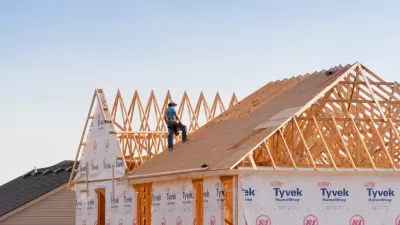A new study looks at homeownership among native-born and foreign-born residents in U.S. cities.

The company LendingTree recently examined census data to better understand homeownership among immigrants in the 50 largest cities in the United States. In a ranking of the cities, Miami was at the top of the list, where 26 percent of homeowners are immigrants and 34 percent are native-born residents. At the other end of the list was Pittsburgh, where immigrants make up only 2 percent of homeowners, compared to 68 percent native-born homeowners.
“For the most part, the highest immigrant homeownership rates were in some of the most expensive markets — which is not surprising, since those areas also tend to have vibrant economies and job opportunities that attract immigrants,” reports Michael Kolomatsky.
Still, Miami stands out from other top-ranking cities because its median home price of $278,700 is significantly lower than the high-cost cities right behind it — San Jose, California; Los Angeles; and San Francisco. Of all the cities included in the study, it is also the one with the highest percentage of immigrants, 41 percent.
FULL STORY: Immigrants and Homeownership

Alabama: Trump Terminates Settlements for Black Communities Harmed By Raw Sewage
Trump deemed the landmark civil rights agreement “illegal DEI and environmental justice policy.”

Study: Maui’s Plan to Convert Vacation Rentals to Long-Term Housing Could Cause Nearly $1 Billion Economic Loss
The plan would reduce visitor accommodation by 25% resulting in 1,900 jobs lost.

Why Should We Subsidize Public Transportation?
Many public transit agencies face financial stress due to rising costs, declining fare revenue, and declining subsidies. Transit advocates must provide a strong business case for increasing public transit funding.

Paris Bike Boom Leads to Steep Drop in Air Pollution
The French city’s air quality has improved dramatically in the past 20 years, coinciding with a growth in cycling.

Why Housing Costs More to Build in California Than in Texas
Hard costs like labor and materials combined with ‘soft’ costs such as permitting make building in the San Francisco Bay Area almost three times as costly as in Texas cities.

San Diego County Sees a Rise in Urban Coyotes
San Diego County experiences a rise in urban coyotes, as sightings become prevalent throughout its urban neighbourhoods and surrounding areas.
Urban Design for Planners 1: Software Tools
This six-course series explores essential urban design concepts using open source software and equips planners with the tools they need to participate fully in the urban design process.
Planning for Universal Design
Learn the tools for implementing Universal Design in planning regulations.
Smith Gee Studio
Alamo Area Metropolitan Planning Organization
City of Santa Clarita
Institute for Housing and Urban Development Studies (IHS)
City of Grandview
Harvard GSD Executive Education
Toledo-Lucas County Plan Commissions
Salt Lake City
NYU Wagner Graduate School of Public Service





























